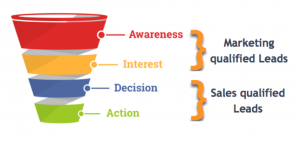Raise your hand if you have ever wished you could understand your prospects and customers better.
That’s what I thought.
It’s really hard to persuade a prospect to become a customer if you don’t understand who they are and what they need. After all, you can’t present the right solution if you don’t really understand their needs, right?
Understanding your prospects and finding out more about them is the most critical part of your sales process. It’s what enables you to help them solve their problems. If your objective is to make your prospect’s life easier (and it should be), you can’t afford to skip this step. Pitching your offering without knowing your prospect is like trying to find the proverbial needle in the haystack.
You’ll be pitching solutions that may not even be relevant to your prospect.
You need to make sure you understand your prospect’s situation as much as possible. Below are the types of questions you can ask that will lead you to better understanding your prospects.
Understanding Your Prospects
Qualify Your Prospect First
First, you need to make sure that you’re spending your time talking to someone who is a good candidate for your offering. Nothing is worse than going through your entire sales process only to find out that your prospect isn’t a good fit for your product or service.
The last thing you want to do is waste your time.
The first questions you ask your prospect should be designed to determine whether or not you should proceed with the interaction. These questions will help you make sure that you don’t waste time.
You can thank me later.
Here are some of the things you need to find out:
- Does the prospect actually need your offering?
- How badly do they need it? Is it an urgent need?
- Can they afford to pay for it?
- Is your prospect the one who makes the buying decisions?
It probably won’t be appropriate to ask these questions directly, but you should ask other questions that will help you find these things out.
What’s Your Prospect’s Current State?
After you determine that your prospect is a good fit for your offering, you can start finding out more about them. This is when you will begin to truly understand what your prospect needs and how you can help.
First, you have to figure out how things are for your prospect in the present. Here is what you need to find out:
- What are things like right now?
- Are they happy with it? If not, why?
- What would they change about it?
Here’s an example. Let’s say you sell lawnmowers. You have a prospect who is in the market for a new one.
In this case, you want to find out what type of mower they are using currently. Have them tell you if they like the mower they use right not. Find out what they like about it or what they don’t like.
If they don’t like their current lawnmower, find out why. Ask them to tell you what they would change about it if they could. The better you understand about your prospect’s current state, the easier it will be to provide the right solution.
Where Does Your Prospect Want To Be?
After you find out how things are in the present, you now must focus on the future. This is the part where you find out what your prospect really wants. You have to find out what your prospect wants to achieve.
One thing you need to focus on at this point is what your prospect feels. It may seem counterintuitive, but you need to appeal to their emotions. Most of the buying decisions people make are based on feelings, not logic.
You need to make sure you find out what they feel right now, and what they want to feel. Here’s what you want to find out:
- How does your prospect want things to be? How will this make their lives easier?
- What are they doing now to try to get there?
- How badly do they want things to change?
- How do they want to feel?
- What will things look like for them when they finally get where they want to be?
Listen carefully when your prospect is telling you about what they feel. This is what you need to address when it’s time to pitch your offering.
Let’s Go Back to our Lawnmower Example
If you want to sell your prospect a lawnmower, you have to find out what they look for in a lawnmower. What type of lawn do they have? Are they having a hard time making their lawn look right?
Perhaps they’re satisfied with their current lawnmower and they just need a new one that does the same thing. Make sure you’re listening carefully so that you don’t make the mistake of pitching something the customer doesn’t want or need.
What’s Keeping Them From Getting What They Want?
Now you’re going to find out about their pain points. You want to find out what frustrates them. After finding out what your prospect wants, you need to discover what’s keeping them from getting it.
This is where you will find out the problem you need to solve. Here’s what you need to know:
- What are the obstacles that prevent them from reaching their objective?
- What have they already tried in order to overcome their obstacles?
- How badly do these obstacles frustrate them?
- How can you help them?
This is the most important component to understanding your prospects. Since you’re there to solve a problem, it’s important that you understand what their real problems are. This will give you the information you need to provide the right solution.
Using our lawnmower example, it would be important to find out what they don’t like about their lawnmower. What is lacking? Why doesn’t their current lawnmower enable them to have the lawn they want?
Are the issues with their lawnmower just annoyances? Or are they really keeping your customer from getting the lawn they want?
Again, make sure that you understand what the prospect’s real problems are.
Conclusion
Understanding your prospects is the most important part of the sales process. Without taking the time to get inside their heads, you won’t be able to help them solve their problems.
Not only will asking the right questions help you understand your prospects, it will also help you build trust. Why? Because you’re showing your prospects that you’re interested in helping them, not just getting them to give you their money.
If you build trust with your prospects and show that you truly want to help them solve their problems, you will be able to establish a deeper connection which will lead to better understanding your prospects.
Originally published on Small Business Trends
Business & Finance Articles on Business 2 Community(119)
Report Post





